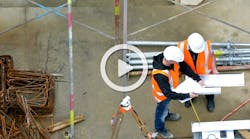By definition, low-impact development (LID) describes a site design approach to managing stormwater runoff by emphasizing conservation and the use of onsite natural features to protect water quality. California’s recent adoption of the Phase II Small MS4 General Permit demonstrates the trend of heightening regulations dramatically broadening the realm under which LID must be employed. Although many in the regulatory and environmental fields strongly support these stipulations, numerous challenges lie between the conservation intentions of these requirements and the overall environmental impact of finished LID features. It is these challenges that often convert the low-impact, economical intent to high-impact, costly implementation. This conversion leaves much of LID’s conservation potential untapped. While this article is not meant to demean the efforts of those who have relied on practices such as irrigation systems, engineered soils, or LID manuals, it is a call to reevaluate how low the impact of current LID implementation is. This article briefly presents some of the challenges to keeping development closer to the low-impact end of the scale and opens the door to more thorough discussion in future articles.
Lack of Ecosystem Knowledge
Many LID features look good from standpoints of aesthetics, engineering, and even surface stormwater volume retention. Managers will proudly display their LID installations during tours, with attendees nodding approval at the stormwater retention improvement made to the formerly paved site. All too often this feature includes plants installed at an approximate 50% cover, engineered soil, and a permanent irrigation system. Although the site looks good on the surface, visitors don’t see the environmental impacts of the dump trucks that hauled the native soil away and delivered the engineered soil, the cumulative effects of site irrigation on the local water supply, the manufacturing of the irrigation system, or the installation costs associated with the soil replacement and irrigation system.
Envision this same LID feature infiltrating and storing larger volumes of stormwater while exhibiting more thorough treatment, all without the cost and environmental impact of an irrigation system or soil replacement. Some basic understanding of ecology and soil science is often the key to integrating these conservation and economic benefits into an LID installation. Tools such as solar energy capture, carbon sequestration, and site-specific soil amending and intentional planting play an integral role in realizing the environmental health-boosting potential of LID. These tools more closely mimic nature.
Traditional Landscaping Standards
Many LID features use landscaping as a primary treatment component. A major hurdle to site-appropriate landscaping is the entrenched idea of what a successful landscape looks like. This idea takes forms such as jurisdictionally approved plant lists; landscape installation standards such as required container size; and cultural views that demand the lush, green, high-input landscaping systems appropriate for a business park entrance. Approved plant lists may not contain plants ideal for local LID features. Many drought-tolerant, native plants are available only in sizes smaller than required by local landscape standards. A majority of these plants have a dormancy period in which they fail to meet the irrigated garden appearance expected by today’s society. These standards all foster an environment where higher-water-consuming, non-native, ornamental plants are installed.
Conventional landscaping, with its required fertilizers, irrigation, and high-demand plants, creates an environment where nutrients are leached, water is unnecessarily consumed, and installation costs are much higher. Shifting this paradigm from a conventional to a more native-style landscape is necessary to bring us closer to the conservation intent of LID.
Manuals Promoting a Cookie-Cutter Approach
There is still a lot of conflicting information in manuals and literature across the United States concerning LID standards and specifications. Many standards and manuals are too rigid, preventing knowledgeable designers from creating the lowest impact, site-specific, most ecologically functional features. Soil mixes and planting densities are two common examples of these rigid standards. Language allowing flexibility should be incorporated into LID manuals and standards. For example, an LID manual might state that no soil amending should take place under the dripline of existing trees. Such a statement should be followed by a flexibility qualifier, such as “unless specified by a knowledgeable consultant demonstrating that the employed techniques will achieve the desired goals.” This type of qualifier would allow consultants and contractors the freedom to employ radial mulching or other appropriate amendment techniques to ensure optimal project success.
Budgets
Budgets were of particular concern during the recent recession, and they will likely remain a consideration, from large-scale developments to the smallest residential project. Although a 50% planting cover may be specified to maintain water detention volume in the ponding area of an LID feature, this density also requires less plant material and less installation labor. The downfall of this cost-saving strategy is that long-term maintenance will likely outweigh initial savings because weeds will dominate the unplanted areas. Low plant density will decrease the treatment, infiltration, and solar energy capture of such an installation. Budget pressures tempt designers to minimize soil amendments, setting the stage for poor plant performance. This degraded performance has resulted in poor public opinion of LID and decreased environmental benefits. If conflicts between the budget and desired installation arise, innovative solutions should be sought to create fully functional LID features, whether by procuring donated plants and materials, or installing smaller features that can be expanded later.
The System
The current construction system on government lands typically entails a consultant designing LID features as post-construction stormwater control measures. Specifications are developed for these features, which become part of the overall construction design handed to the jurisdictional agency. The project is then put out to bid, and the bidder with the lowest cost proposal or highest score in the bidding process gets the contract. After passing from the agency to the contractor, the plan is then handed to a landscape contractor. By the time this fourth party receives the plan and installs the feature, a number of onsite realities may clash with assumptions made during the initial design, resulting in effectiveness falling short of the original expectations.
A classic example is finished grades differing from initially anticipated grades, resulting in different soil texture and infiltration values than expected. Because the original designer is often far removed at this stage of the project, the installation crew doesn’t have the knowledge or the authority to adapt the plant or soil components to the unexpected conditions. Additionally, the project timeline often involves plant installation during the dry season, ensuring high plant mortality or the necessity of irrigation. Although the designer may have intended for plant installation to take place during the late fall to ensure rainy-season establishment, the landscape contractor is often tasked with installation during the height of the dry season. This scenario demonstrates the need for collaboration from all concerned parties in the chain of LID implementation.
Looking Ahead
The term low-impact development, at its core, means mimicking nature during development to manage stormwater for environmental conservation. From an engineered cistern to a densely planted native rain garden, LID decreases the deleterious effects of environmental and human forces on a given site. Although much knowledge has accrued over the past decade to establish sound practices to employ in this endeavor, the topics mentioned highlight some of the roadblocks to fully realizing the conservation potential that LID presents. Future articles will explore possible solutions to these challenges and reevaluate how to keep low-impact development as “low impact” as possible, while maximizing the environmental benefits.


